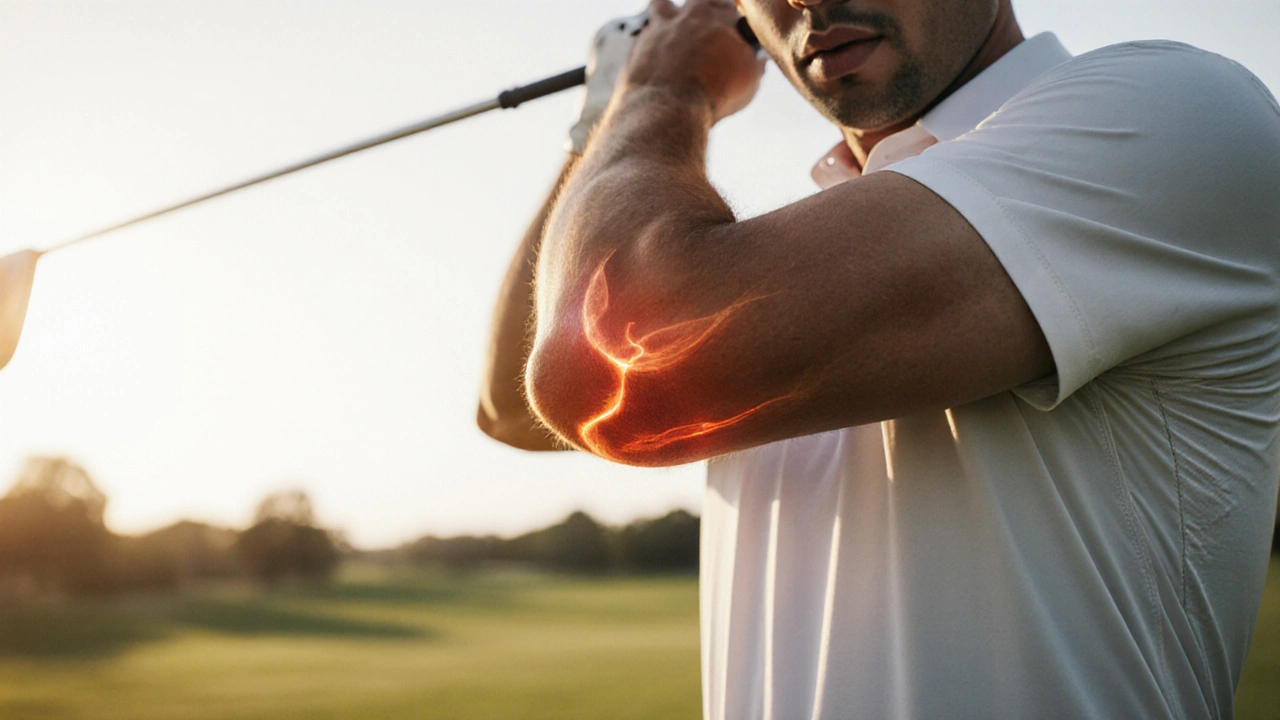Learn how tendonitis causes golfer's elbow, spot symptoms, explore treatments from rest to advanced therapies, and discover practical prevention tips.
Golfer's elbow – Causes, symptoms & treatment options
When dealing with golfer's elbow, a painful condition affecting the inner side of the elbow caused by overuse of the forearm muscles. Also called medial epicondylitis, the medical term that describes the same tendon inflammation, this ailment shows up in golfers, tennis players, and anyone who repeats gripping motions. It’s essentially a form of tendonitis, where the tendons attaching to the medial epicondyle become irritated and start to micro‑tear.
Why does it happen? The repetitive wrist flexion and forearm pronation put constant strain on the common flexor tendon. Everyday tasks like opening jars, using a screwdriver, or typing for hours can add up, especially if you skip warm‑ups. The result is tiny tears that trigger inflammation, swelling, and that classic ache when you try to lift a coffee cup or swing a club. The body’s natural response is to send more blood and immune cells to the area, which is where NSAIDs, non‑steroidal anti‑inflammatory drugs such as ibuprofen or naproxen come into play. They reduce pain by blocking the chemicals that cause swelling.
How to manage the pain and get back to motion
First step is always rest – stop the activity that triggered the flare and give the tendon a break. Ice for 15‑20 minutes a few times a day helps calm the swelling. While rest eases the immediate pain, long‑term recovery depends on physical therapy, a structured program of stretching, strengthening, and manual techniques designed to restore tendon health. A therapist will teach you forearm flexor stretches, eccentric loading exercises, and proper biomechanics so the tendon can rebuild stronger. Most people see noticeable improvement within 4‑6 weeks if they stick to the regimen.
If pain persists despite rest, ice and therapy, a corticosteroid injection, a targeted dose of anti‑inflammatory medication delivered directly into the affected tendon sheath can provide rapid relief. The injection reduces inflammation dramatically, but it’s not a cure‑all; doctors usually recommend it only after conservative measures have failed, and they caution against repeated use because it can weaken tendon fibers over time.
Beyond medical options, simple lifestyle tweaks make a big difference. Adjusting grip size on clubs or tools, using ergonomic keyboards, and incorporating regular forearm warm‑ups before sport or work can prevent recurrence. Strengthening the shoulder and core also off‑loads stress from the elbow, creating a more balanced kinetic chain.
Below you’ll find a curated list of articles that dive deeper into each of these topics – from detailed NSAID comparisons to step‑by‑step physical therapy routines and the pros and cons of steroid injections. Whether you’re looking for quick pain relief or a full recovery plan, the resources here cover the whole spectrum of golfer’s elbow care.

